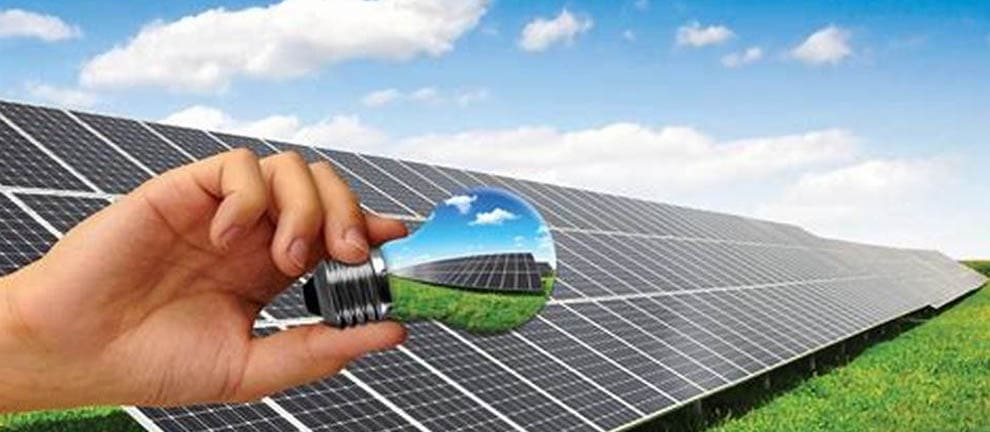13 Fundamental Advantages and Disadvantages of Solar Energy
Solar energy is becoming increasingly popular as the world takes notice of the burgeoning carbon emission problems that come with burning fossil fuels. But why all the fuss?
2015 has been a particularly significant year for solar, seeing a dramatic drop in the price of solar panels, along with the refining of advantageous public funding models. Below we will discuss the advantages and disadvantages of solar energy today.
What are the 2 main advantages to solar energy
1- Solar power is expensive
2- High initial costs
What are the 2 main disadvantages to solar energy
1- Electricity bill reduction
2- Energy independence
2015 has been a particularly significant year for solar, seeing a dramatic drop in the price of solar panels, along with the refining of advantageous public funding models. Below we will discuss the advantages and disadvantages of solar energy today.
Now read complete solar significant advantages and disadvantages
- The first and foremost advantage of solar energy is that, beyond panel production, it does not emit any greenhouse gases.
- Solar energy is produced by conducting the sun’s radiation – a process void of any smoke, gas, or another chemical by-product.
- This is the main driving force behind all green energy technology, as nations attempt to meet climate change obligations in curbing emissions.
- Italy’s Montalto di Castro solar park is a good example of solar’s contribution to curbing emissions. It avoids 20,000 tonnes per year of carbon emissions compared to fossil fuel energy production.
Ongoing Free Energy
- Another advantage of using solar energy is that beyond initial installation and maintenance, solar energy is free.
- Solar doesn’t require expensive and ongoing raw materials like oil or coal and requires significantly lower operational labor than conventional power production. Raw materials don’t have to be constantly extracted, refined, and transported to the power plant.
- Life expectancy ranges between manufacturers, but many panels produced today carry a 25-30 year warranty – with a life expectancy of up to 40 years.
Decentralization of power
- Solar energy offers decentralization in most (sunny) locations, meaning self-reliant societies.
- Oil, coal, and gas used to produce conventional electricity are often transported cross-country or internationally. This transportation has a myriad of additional costs, including monetary costs, pollution costs of transport, and wear and tear costs, all of which are avoided with solar.
- Of course, decentralization has its limits as some locations get more sunlight than others.
Going off the grid with solar
- Solar energy can be produced on or off the grid.
- On-grid means a house remains connected to the state electricity grid. The off-grid has no connection to the electricity grid, so the house, business, or whatever is being powered is relying solely on solar or solar-hybrid.
- The ability to produce electricity off the grid is a major advantage of solar energy for people who live in isolated and rural areas. Power prices and the cost of installing power lines are often exorbitantly high in these places and many have frequent power cuts.
- Many city-dwellers are also choosing to go off the grid with their alternate energy as part of a self-reliant lifestyle.
Solar jobs
- A particularly relevant and advantageous feature of solar energy production is that it creates jobs.
- The EIAA states that Europe’s solar industry has created 100,000 jobs so far.
- Solar jobs come in many forms, from manufacturing, installing, monitoring, and maintaining solar panels, to research and design, development, cultural integration, and policy jobs.
- The book Natural Capitalism offers a good perspective on the employment potential of green design and a prudent approach to using resources.
- The book proposes that while green technology and associated employment can be expensive, much greater money can be saved when combined with proven “whole-system” efficiency strategies (e.g passive lighting and airflow).
- With solar energy currently contributing only an estimated 4% of the world’s electricity, and an economic model where raw materials don’t have to be indefinitely purchased and transported, it’s reasonable to assume solar jobs are sustainable if the solar industry can survive the recession.
Solar’s avoidance of politics and price volatility
- One of the biggest advantages of solar energy is the ability to avoid the politics and price volatility that is increasingly characterizing fossil fuel markets.
- The sun is an unlimited commodity that can be sourced from many locations, meaning solar is less vulnerable to the price manipulations and politics that have more than doubled the price of many fossil fuels in the past decade.
- While the price of fossil fuels has increased, the per watt price of solar energy production has more than halved in the past decade – and is set to become even cheaper soon as better technology and economies of scale take effect.
- Furthermore, the ever-abundant nature of the sun’s energy would hint at a democratic and competitive energy market – where wars aren’t fought over oil fields and high-demand raw materials aren’t controlled by monopolies.
- Of course, a new form of politics has emerged about government incentives and the adoption of solar, however, these politics are arguably minor compared to the fossil fuel status quo.
Saving Eco-systems and livelihoods
- Because solar doesn’t rely on constantly mining raw materials, it doesn’t result in the destruction of forests and Eco-systems that occurs with many fossil fuel operations.
- Destruction can come in many forms, from destruction through accepted extraction methods, to more irresponsible practices in vulnerable areas, to accidents.
- Major examples include Canada’s tar sands mining which involves the systematic destruction of the Boreal Forest (which accounts for 25% of the world’s intact forest land), and creates large toxic by-product ponds.
- The Niger Delta is an example where excessive and irresponsible oil extraction practices have poisoned fishing deltas previously used by villagers as the main source of food and employment, creating extremely desperate poverty and essentially decimating villages.
- A more widely known, but the arguably lower human-cost incident is the 2010 BP oil spill in the Gulf of Mexico. It killed 11 people and spilled 780 thousand cubic meters of crude oil into the sea.
Energy Independence
- Solar energy provides individuals, communities, and even entire nations with a level of energy independence. By harnessing the power of the sun, they reduce their reliance on external sources of energy, whether it's coal, oil, or natural gas. This increased energy independence can enhance energy security, reduce vulnerability to supply disruptions, and lessen the impact of global energy price fluctuations. In the long run, it can also contribute to greater energy stability and resilience.
The best is yet to come
- Solar technology is currently improving in leaps and bounds. Across the world, and particularly in Europe, savvy clean technology researchers are making enormous developments in solar technology.
- What was expensive, bulky, and inefficient yesterday, is becoming cheaper, more accessible, and vastly more efficient each week.
- The biggest disadvantage of solar energy is that it’s not constant. To produce solar electricity there must be sunlight. So energy must be stored or sourced elsewhere at night.
- Beyond daily fluctuations, solar production decreases over winter months when there are fewer sunlight hours and solar radiation is less intense.
Solar Inefficiency
- A very common criticism is that solar energy production is relatively inefficient.
- Currently, widespread solar panel efficiency – how much of the sun’s energy a solar panel can convert into electrical energy – is at around 22%. This means that a fairly vast amount of surface area is required to produce adequate electricity.
- However, efficiency has developed dramatically over the last five years, and solar panel efficiency should continue to rise steadily over the next five years.
- For the moment though, low efficiency is a relevant disadvantage of solar.
- Solar inefficiency is an interesting argument, as efficiency is relative. One could ask “inefficient compared to what?” And “What determines efficiency?” Solar panels currently only have a radiation efficiency of up to 22%, however, they don’t create the carbon by-product that coal produces and doesn’t require constant extraction, refinement, and transportation – all of which surely carry weight on efficiency scales.
Solar panels are bulky
- Solar panels are bulky. This is particularly true of the higher-efficiency, traditional silicon crystalline wafer solar modules. These are the large solar panels that are covered in glass.
- New technology thin-film solar modules are much less bulky and have recently been developed as applications such as solar roof tiles and “amorphous” flexible solar modules. The downfall is that thin-film is currently less efficient than crystalline wafer solar.
Storing Solar
- Solar electricity storage technology has not reached its potential yet. While there are many solar drip feed batteries available, these are currently costly and bulky, and more appropriate to small-scale home solar panels than large solar farms.





